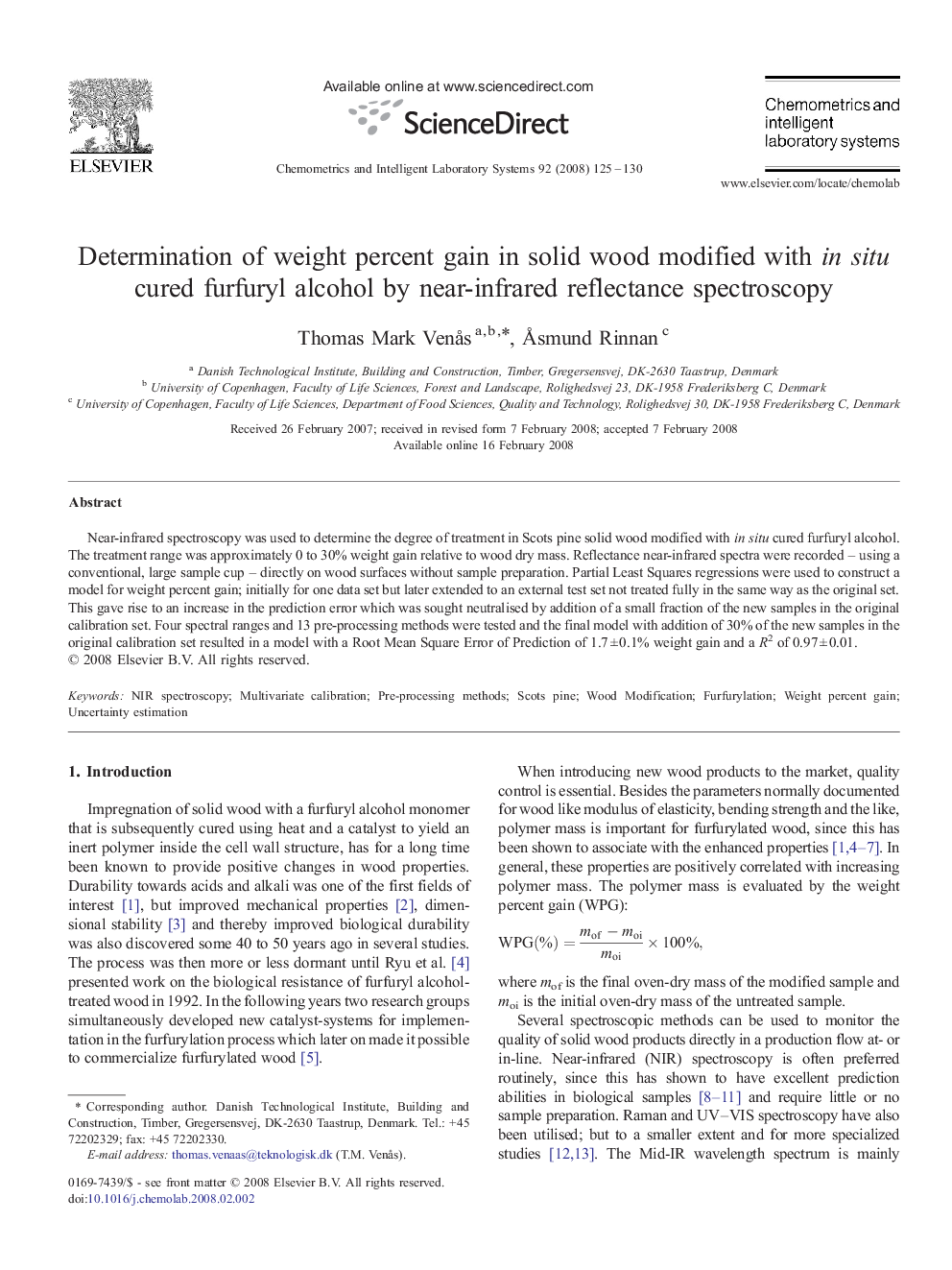| Article ID | Journal | Published Year | Pages | File Type |
|---|---|---|---|---|
| 1181310 | Chemometrics and Intelligent Laboratory Systems | 2008 | 6 Pages |
Near-infrared spectroscopy was used to determine the degree of treatment in Scots pine solid wood modified with in situ cured furfuryl alcohol. The treatment range was approximately 0 to 30% weight gain relative to wood dry mass. Reflectance near-infrared spectra were recorded – using a conventional, large sample cup – directly on wood surfaces without sample preparation. Partial Least Squares regressions were used to construct a model for weight percent gain; initially for one data set but later extended to an external test set not treated fully in the same way as the original set. This gave rise to an increase in the prediction error which was sought neutralised by addition of a small fraction of the new samples in the original calibration set. Four spectral ranges and 13 pre-processing methods were tested and the final model with addition of 30% of the new samples in the original calibration set resulted in a model with a Root Mean Square Error of Prediction of 1.7 ± 0.1% weight gain and a R2 of 0.97 ± 0.01.
